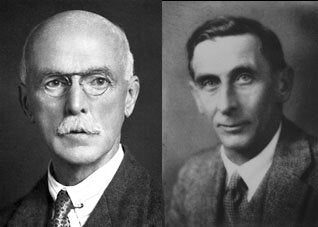BLACKFRIDAY GIR 60% RABATT
BLACKFRIDAY GIR 60% RABATT
Your cart is empty
Before we move on to NAD+, we need to understand how and why our cells are so strongly linked to aging.


Our entire bodies are composed of cells. As these cells become more fragile with age, we tend to feel less energetic and more off-balance.


Steps can be taken to slow down the aging process at any time, and the sooner we start, the better. While regular exercise and a healthy diet are crucial, there are additional measures we can take. Like what?


NAD+ was first discovered by Sir Arthur Harden and William John Young in 1906 during their research on fermentation, where yeast converts sugar into alcohol and CO2. Nearly 20 years later, Harden and Hans von Euler-Chelpin were awarded the 1929 Nobel Prize in Chemistry for their work on fermentation.
Euler-Chelpin determined that NAD+ consists of two nucleotides, the fundamental components of nucleic acids, which constitute DNA. This discovery, showing that fermentation relies on NAD+, hinted at NAD+'s crucial role in human metabolic processes.


A healthy lifestyle and a balanced diet can work wonders for your overall well-being, including supporting your NAD+ levels. But if you’re looking to give your NAD+ a real boost, science now shows that NAD+ supplements can provide an effective and proven edge.


Should I choose NR or NMN?
While both Nicotinamide Riboside (NR) and Nicotinamide Mononucleotide (NMN) are popular NAD+ precursors, we believe NR stands out as the superior choice. Here’s why:

NR is accepted and approved as a dietary supplement, while NMN is not. It is actually not allowed to sell NMN as dietary supplement. NMN's status is less established, which may limit its availability as a dietary supplement. NR safety profile is well-established, providing peace of mind for those committed to maintaining their NAD+ levels.

Research suggests that NR may have superior bioavailability compared to NMN. Studies indicate that NR is effectively absorbed in the intestines and converted to NAD+ in the body, making it a more efficient option for increasing NAD+ levels.

There is a growing body of clinical research supporting the efficacy of NR in increasing NAD+ levels and promoting health benefits associated with longevity. While NMN also shows promise, NR has been the subject of more extensive studies, providing a stronger evidence base for its effectiveness as a NAD+ precursor.
- Belenky, P., Bogan, K. L., & Brenner, C. (2007). "NAD+ metabolism in health and disease. This article provides a comprehensive overview of NAD+ metabolism, including the three primary pathways of NAD+ synthesis.
- Canto, C., & Auwerx, J. (2012). "NAD+ as a signaling molecule in metabolic regulation." This article reviews the role of NAD+ in metabolism, emphasizing its synthesis pathways and biological significance.
- Subcellular compartmentalization of NAD+ and its role in cancer: A sereNADe of metabolic melodies". This review discusses the various pathways of NAD+ metabolism, including de novo synthesis and salvage pathways.
- The discovery of NAD+. NAD+ was first discovered by Sir Arthur Harden and William John Young in 1906.
- Samuel A. J. Trammell, Mark S. Schmidt, Benjamin J. Weidemann, Philip Redpath, Frank Jaksch, Ryan W. Dellinger, Zhonggang Li, E. Dale Abel, Marie E. Migaud & Charles Brenner "Nicotinamide riboside is uniquely and orally bioavailable in mice and humans". This study finds that NR supplementation increases NAD+ levels, which promotes metabolic health, enhances mitochondrial function, and supports overall vitality in aging mice.